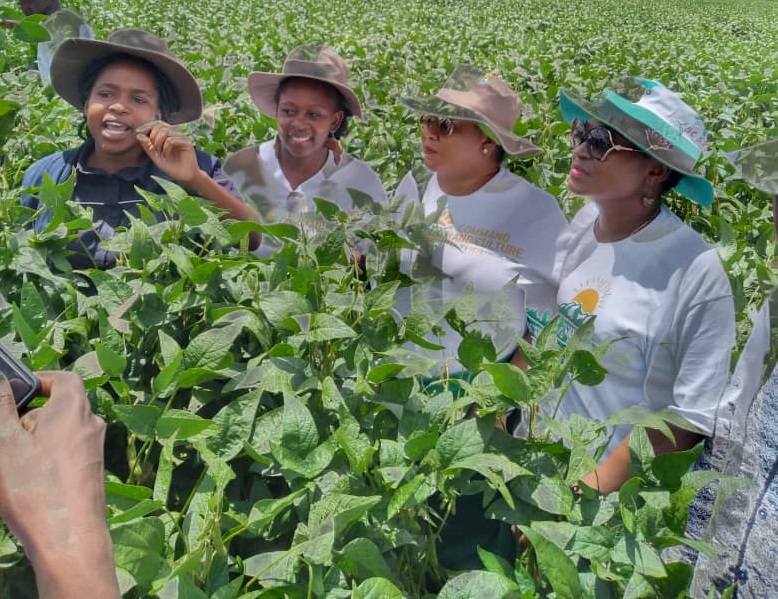Derick Tsimba
Agriculture remains one of the key economic sectors in Zimbabwe that has a potential to turn tables towards achieving vision 2030 as outlined in the National Development Strategy (NDS1), “towards a prosperous and empowered upper middle income society by 2030.”
The Second Republic through the Ministry Of Lands, Agriculture, Fisheries, Water and Rural Resettlement has made milestones of achievements by strategically launching and implementing various programmes and projects in the Agricultural sector.
As we go through some of these programmes, the Agriculture Food Systems and Transformation Strategy, formation of the Fisheries Department and Urban and Peri-Urban Agriculture and Development Plan. We want to see how NDS1 could transform agriculture towards a prosperous and empowered upper middle income society by 2030.
The Agriculture Food Systems and Transformation Strategy are set to grow the agriculture sector from US $5.2 billion industry to a US $8.2 billion industry by 2030.
In the quest for achieving a US $8.2 billion industry, the Agriculture Food Systems and Transformation Strategy have various programmes that support it. These are the Agriculture Recovery Programme, Horticulture Growth and Recovery Plan, Fast Track Irrigation Rehabilitation and Growth Plan, Livestock Recovery and Growth Plan and the Agriculture Information Management Systems.
The Agriculture Recovery Programme will provide inputs to over 2 million vulnerable households across the country. It will also oversee the production of over 2 600 000 metric tonnes of grain, promotion of Conservation Agriculture and creation of a low veld green belt.
Under the Horticulture Growth and Recovery Plan, the Ministry Of Lands, Agriculture, Fisheries, Water and Rural Resettlement will manage the plantation of over one million eight hundred thousand (1 800 000) million fruit trees in Zimbabwe. It will also create twenty five thousand (25 000) village nutrition gardens, nine thousand (9000) school nutrition gardens and orchards. The Horticulture Growth and Recovery plan will conduct drilling of two thousand six hundred and thirty seven (2637) boreholes. Put fifty five thousand three hundred and forty eight (55 348) hectares of land under horticulture and has set a seven million seven hundred thousand (7 700 000) hectares production target.
The Fast Track Irrigation Rehabilitation and Growth Plan should place four hundred and twenty thousand (420 000) hectares of land under irrigation with one hundred thousand (100 000) hectares of land in low-veld green belt under irrigation. Seventy one thousand (71 000) hectares of irrigation shall be rehabilitated as well as four hundred and fifty (450) irrigation schemes.
Under the Livestock Recovery and Growth Plan, the Ministry seeks to boost the national herd through construction of dip tanks and production of two million (2 000 000) hay bales. Six million (6 000 000) cattle shall be applied tick grease as a means of protecting the national herd from tick borne diseases. A total of one hundred and fifty (150 000 000) million litres of milk annually has also been targeted for production.
Zimbabwe should soon be having a Fisheries Department under that Ministry of Lands as progress has already been made to operationalize the department after the completion of stake holder consultations.
Bringing in the full swing of urban farming towards a prosperous and empowered upper middle income society by 2030, the Urban and Peri-Urban Agriculture Development Plan has been developed although as for now the Ministry has to hold stake holder consultation meetings on how to implement the programme.
On the back drop of Zimbabwe’s situation of yearly importing cereal grains amounting to US $ 800 million, Government introduced the Pfumvudza Programme which has been quite successful to address low productivity of cereal crops. Pfumvudza Programme has managed to empower communal farmers to improve on their productivity, during the 2020 to 2021 farming season, small scale farmers have been quite successful making them food secure this year.
Zimbabwe continues on the journey to turn around its economy through agriculture. The Second Republic through agriculture productivity has potential to turn around Zimbabwe towards a prosperous and empowered upper middle income society by 2030.




